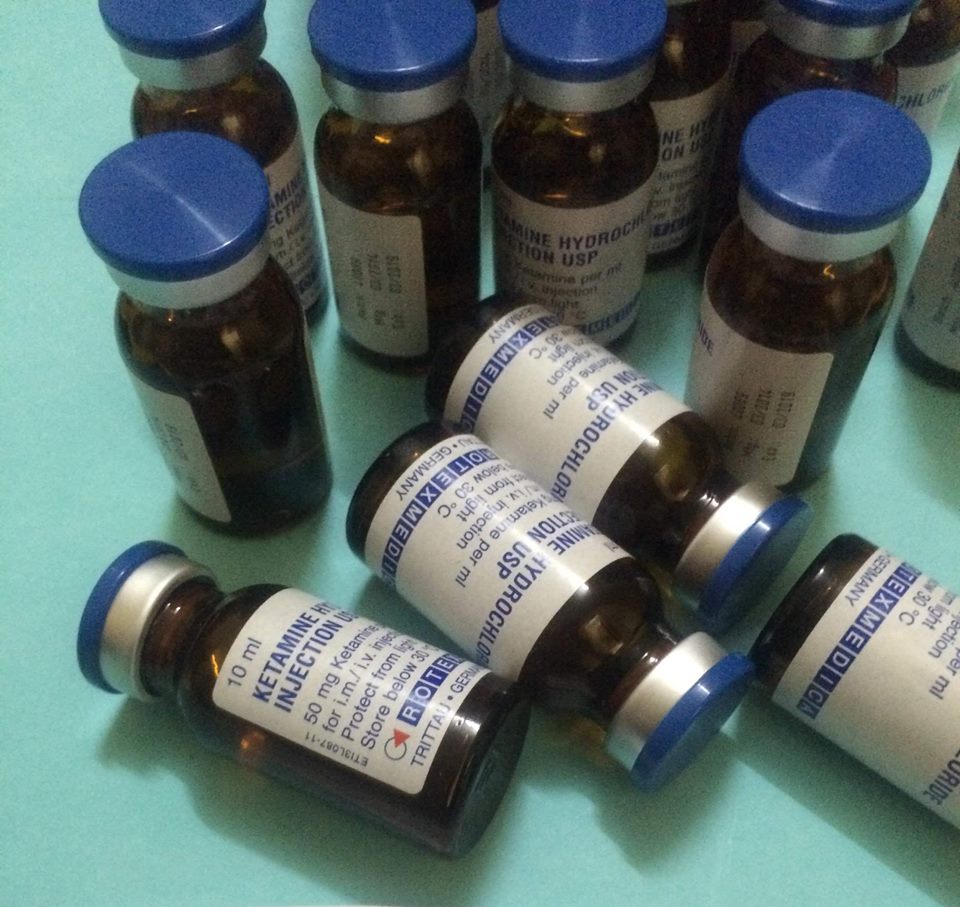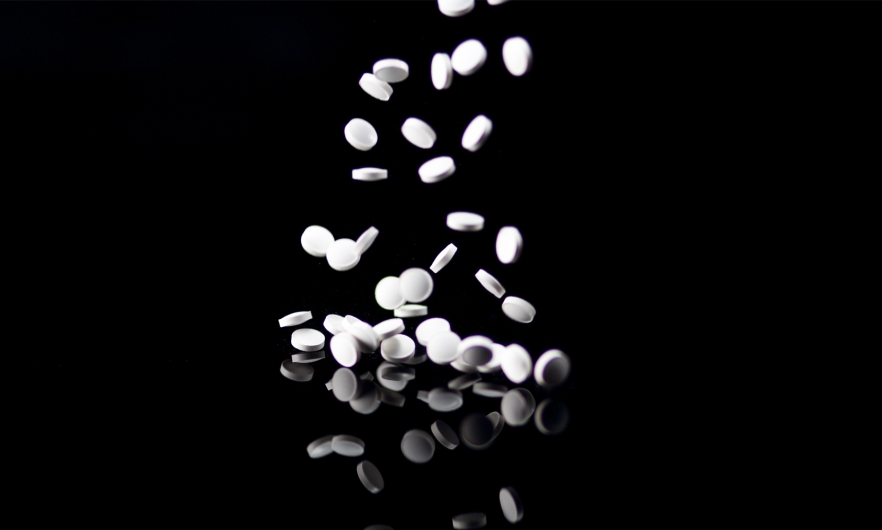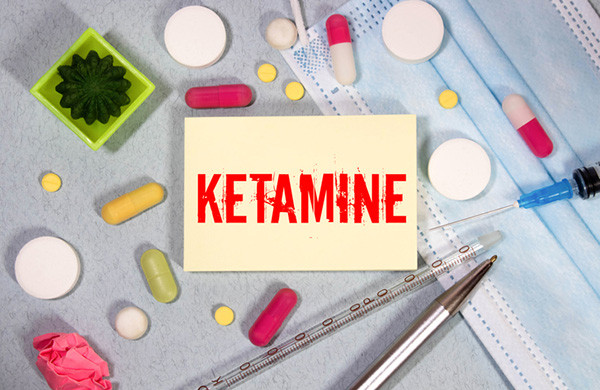Chemicals
Buy Ketamine Powder Europe No Prescription
Ketamine is a dissociative anesthetic used medically for induction and maintenance of anesthesia. It is also used as a treatment for depression and in pain management.[19] Ketamine is an NMDA receptor antagonist which accounts for most of its psychoactive effects.[20]
At anesthetic doses, ketamine induces a state of dissociative anesthesia, a trance-like state providing pain relief, sedation, and amnesia.[21] Its distinguishing features as an anesthestic are preserved breathing and airway reflexes, stimulated heart function with increased blood pressure, and moderate bronchodilation.[21] At lower, sub-anesthetic doses, it is a promising agent for treatment of pain and treatment-resistant depression.[22] As with many antidepressants, the results of a single administration wane with time.[23]
Ketamine is used as a recreational drug for its hallucinogenic and dissociative effects.[24] When used recreationally, it is found both in crystalline powder and liquid form, and is often referred to by users as “Special K” or simply “K”. The long-term effects of repeated use are largely unknown and are an area of active investigation.[25][26][27] Liver and urinary toxicity have been reported among regular users of high doses of ketamine for recreational purposes.[28]
Ketamine was first synthesized in 1962, derived from phencyclidine in pursuit of a safer anesthetic with fewer hallucinogenic effects.[29][30] It was approved for use in the United States in 1970.[19] It has been regularly used in veterinary medicine and was extensively used for surgical anesthesia in the Vietnam War.[31] It is on the World Health Organization’s List of Essential Medicines.[32] It is available as a generic medication.[33]
Medical uses
[edit]
Anesthesia
[edit]
The use of ketamine in anesthesia reflects its characteristics. It is a drug of choice for short-term procedures when muscle relaxation is not required.[34] The effect of ketamine on the respiratory and circulatory systems is different from that of other anesthetics. It suppresses breathing much less than most other available anesthetics.[35] When used at anesthetic doses, ketamine usually stimulates rather than depresses the circulatory system.[36] Protective airway reflexes are preserved,[37] and it is sometimes possible to administer ketamine anesthesia without protective measures to the airways.[34] Psychotomimetic effects limit the acceptance of ketamine; however, lamotrigine[38] and nimodipine[39] decrease psychotomimetic effects and can also be counteracted by benzodiazepines or propofol administration.[40] Ketofol is a combination of ketamine and propofol.
Ketamine is frequently used in severely injured people and appears to be safe in this group.[41] It has been widely used for emergency surgery in field conditions in war zones,[42] for example, during the Vietnam War.[43] A 2011 clinical practice guideline supports the use of ketamine as a sedative in emergency medicine, including during physically painful procedures.[21] It is the drug of choice for people in traumatic shock who are at risk of hypotension.[44] Ketamine often raises blood pressure upon administration and is unlikely to lower blood pressure in most patients, making it useful in treating severe head injuries for which low blood pressure can be dangerous.[45][46][47]
Ketamine is an option in children as the sole anesthetic for minor procedures or as an induction agent followed by neuromuscular blocker and tracheal intubation.[42] In particular, children with cyanotic heart disease and neuromuscular disorders are good candidates for ketamine anesthesia.[40][48]
Due to the bronchodilating properties of ketamine, it can be used for anesthesia in people with asthma, chronic obstructive airway disease, and with severe reactive airway disease including active bronchospasm.[42][40][49]
Pain
[edit]
Ketamine infusions are used for acute pain treatment in emergency departments and in the perioperative period for individuals with refractory or intractable pain. The doses are lower than those used for anesthesia, usually referred to as sub-anesthetic doses. Adjunctive to morphine or on its own, ketamine reduces morphine use, pain level, nausea, and vomiting after surgery. Ketamine is likely to be most beneficial for surgical patients when severe post-operative pain is expected, and for opioid-tolerant patients.[50][51]
Ketamine is especially useful in the pre-hospital setting due to its effectiveness and low risk of respiratory depression.[52] Ketamine has similar efficacy to opioids in a hospital emergency department setting for the management of acute pain and the control of procedural pain.[53] It may also prevent opioid-induced hyperalgesia[54][55] and postanesthetic shivering.[56]
For chronic pain, ketamine is used as an intravenous analgesic, mainly if the pain is neuropathic.[30] It has the added benefit of counteracting spinal sensitization or wind-up phenomena experienced with chronic pain.[57] In multiple clinical trials, ketamine infusions delivered short-term pain relief in neuropathic pain diagnoses, pain after a traumatic spine injury, fibromyalgia, and complex regional pain syndrome (CRPS).[30] However, the 2018 consensus guidelines on chronic pain concluded that, overall, there is only weak evidence in favor of ketamine use in spinal injury pain, moderate evidence in favor of ketamine for CRPS, and weak or no evidence for ketamine in mixed neuropathic pain, fibromyalgia, and cancer pain. In particular, only for CRPS, there is evidence of medium to longer-term pain relief.[30]
Depression
[edit]
Ketamine is a rapid-acting antidepressant,[19] but its effect is transient.[58] Intravenous ketamine infusion in treatment-resistant depression may result in improved mood within 4 hours reaching the peak at 24 hours.[22][25] A single dose of intravenous ketamine has been shown to result in a response rate greater than 60% as early as 4.5 hours after the dose (with a sustained effect after 24 hours) and greater than 40% after 7 days.[59] Although only a few pilot studies have sought to determine the optimal dose, increasing evidence suggests that 0.5 mg/kg dose injected over 40 minutes gives an optimal outcome.[60] The antidepressant effect of ketamine is diminished at 7 days, and most people relapse within 10 days. However, for a significant minority, the improvement may last 30 days or more.[25][26][59][61]
One of the main challenges with ketamine treatment can be the length of time that the antidepressant effects last after finishing a course of treatment. A possible option may be maintenance therapy with ketamine, which usually runs twice a week to once in two weeks.[25][26][27] Ketamine may decrease suicidal thoughts for up to three days after the injection.[62]
An enantiomer of ketamine – esketamine – was approved as an antidepressant by the European Medicines Agency in 2019.[63] Esketamine was approved as a nasal spray for treatment-resistant depression in the United States[64] and elsewhere in 2019. The Canadian Network for Mood and Anxiety Treatments (CANMAT) recommends esketamine as a third-line treatment for depression.[26]
A Cochrane review of randomized controlled trials in adults with major depressive disorder[19] found that when compared with placebo, people treated with either ketamine or esketamine experienced reduction or remission of symptoms lasting 1 to 7 days.[65] There were 18.7% (4.1 to 40.4%) more people reporting some benefit and 9.6% (0.2 to 39.4%) more who achieved remission within 24 hours of ketamine treatment. Among people receiving esketamine, 12.1% (2.5 to 24.4%) encountered some relief at 24 hours, and 10.3% (4.5 to 18.2%) had few or no symptoms. These effects did not persist beyond one week, although a higher dropout rate in some studies means that the benefit duration remains unclear.[65]
Ketamine may partially improve depressive symptoms[19] among people with bipolar depression at 24 hours after treatment, but not three or more days.[66] Potentially, ten more people with bipolar depression per 1000 may experience brief improvement, but not the cessation of symptoms, one day following treatment. These estimates are based on limited available research.[66]
In February 2022, the US Food and Drug Administration (FDA) issued an alert to healthcare professionals concerning compounded nasal spray products containing ketamine intended to treat depression.[67]
Seizures
[edit]
Ketamine is used to treat status epilepticus[68] that has not responded to standard treatments, but only case studies and no randomized controlled trials support its use.[69][70]
Asthma
[edit]
Ketamine has been suggested as a possible therapy for children with severe acute asthma who do not respond to standard treatment.[71] This is due to its bronchodilator effects.[71] A 2012 Cochrane review found there were minimal adverse effects reported, but the limited studies showed no significant benefit.[71]
What to Know About Ketamine
The anesthetic is being used off-label for everything from psychiatric illnesses to autoimmune diseases.





